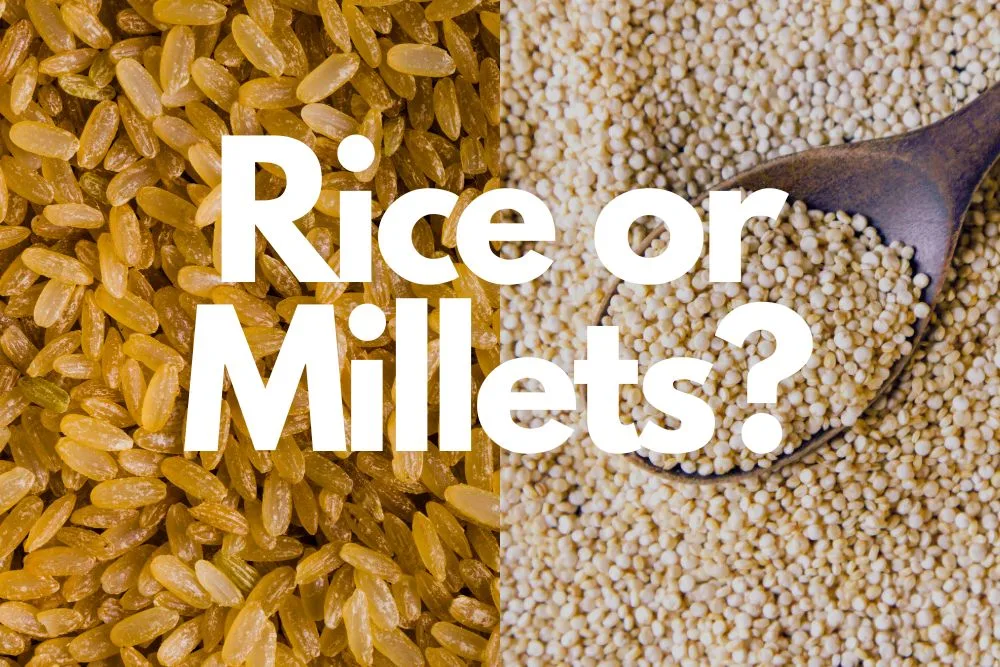Millets and rice may both be carb buddies, but when it comes to nutrition, they’re like the odd couple of the grain world.
Millets, often known as ragi grass, have been a staple in many diets, especially for children. Once seen as a humble grain, millet has gained popularity in supermarkets due to its versatility and numerous health benefits. Millet can be used to prepare a variety of dishes, such as salads, idli, and dosa, making it a favorite for many.
Health benefits of millet
Millet is packed with nutrients that make it a valuable addition to any diet. Some of the key benefits include:
- High Calcium Content: Millet, especially ragi, is rich in calcium, which is essential for strong bones and teeth.
- Protein-Rich: Most varieties of millet contain more protein than rice, making them a great choice for those looking to increase their protein intake.
- Fiber-Rich: Millet is a good source of dietary fiber, which is crucial for maintaining a healthy digestive system.
- Diabetes and Obesity Management: Studies have shown that millet can be beneficial for people with diabetes and obesity, but it should be consumed in moderation.
Despite these numerous health benefits, millet still does not get the recognition it deserves.
Challenges in adopting millet
There are two primary reasons why millet has not gained the prominence it deserves:
- Cultural Adaptation: Society has become accustomed to consuming rice and wheat, making it difficult to switch to millet.
- Unique Taste: Millet has a distinct taste that differs from the more familiar flavors of rice and wheat. Some describe its taste as austere, which may take some getting used to.
However, with time and proper preparation, millet’s unique taste can become quite enjoyable.
Nutritional comparison: millet vs. white rice
Learning the nutritional differences between millet and white rice can help you make better choices in eating. Millet, a nutrient-dense grain, offers fewer calories and carbohydrates compared to white rice. It’s also richer in protein, fat, and essential micronutrients like iron, vitamin B6, and vitamin E, despite having lower calcium content.
While white rice provides more calories and carbohydrates, millet stands out for its higher protein content and superior fiber, making it a valuable addition to a balanced and heart healthy diet. This comparison shows the health benefits of choosing whole grains like millet over refined grains like white rice.
The Future of millet
While rice and wheat remain staples in many diets, it’s important to include millets as well. Millets are not only beneficial for health but also offer a sustainable food source for the future. Embracing millet can provide a nutritious and environmentally friendly alternative to traditional grains.
Adding millet to your diet is not just a trend but a step toward a healthier lifestyle and a more sustainable future.
Also read: virgin coconut oil is the best medicine for oral cancer
